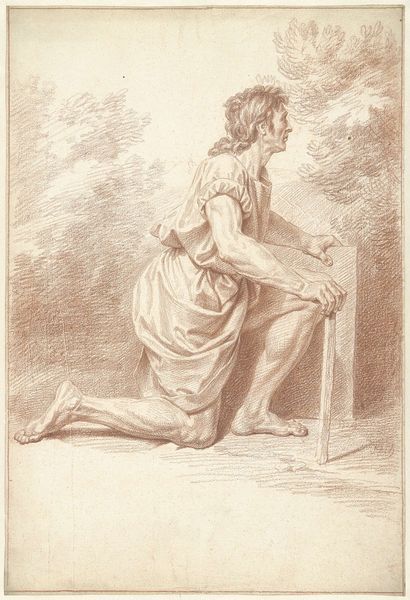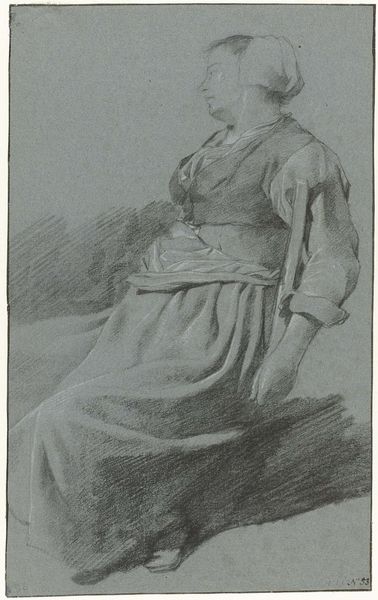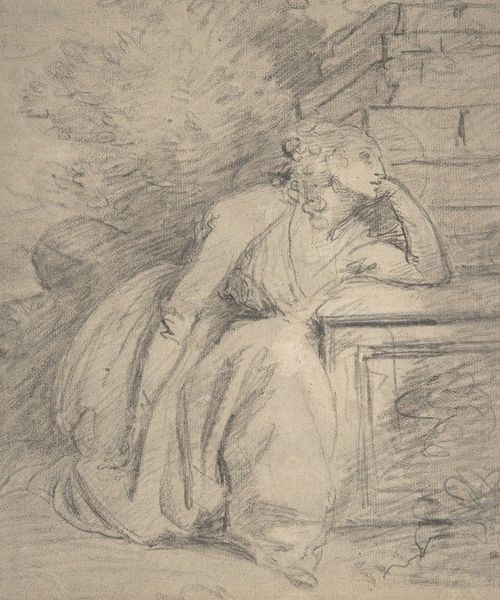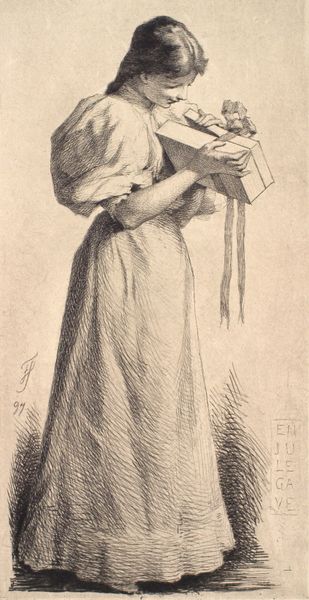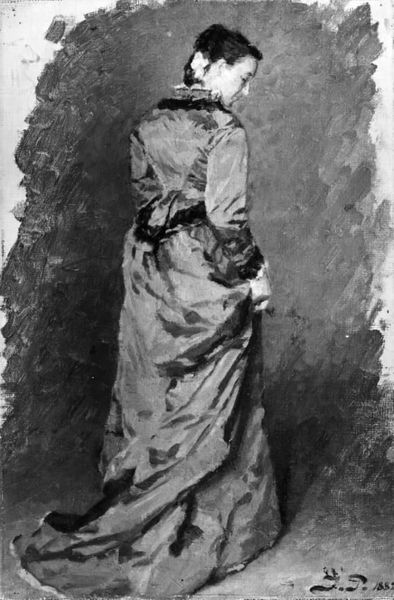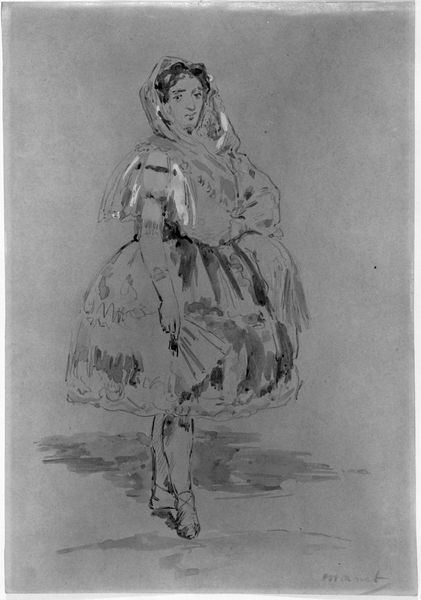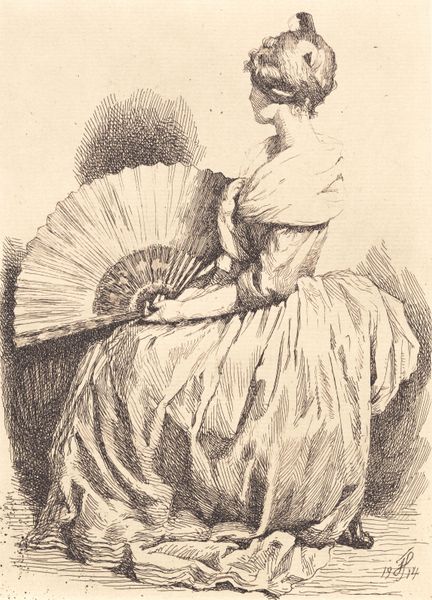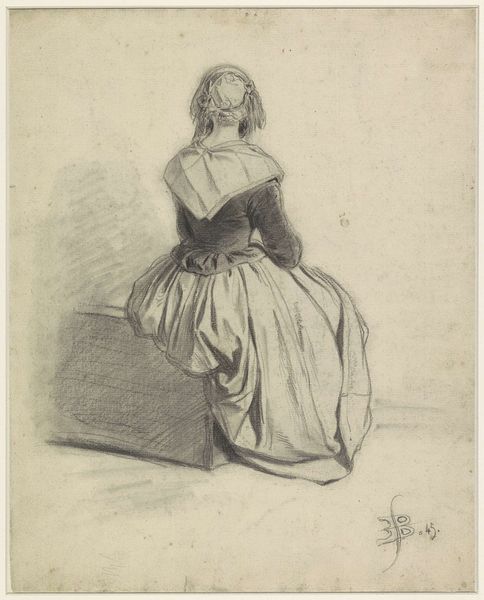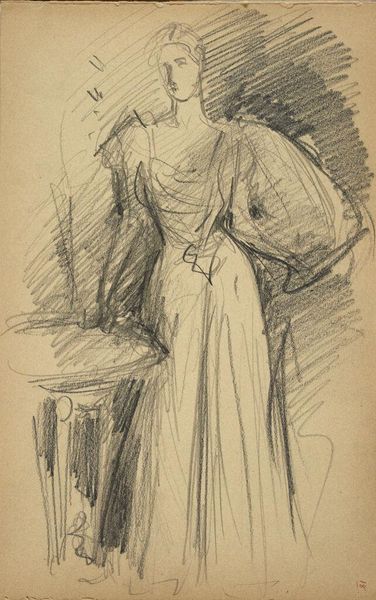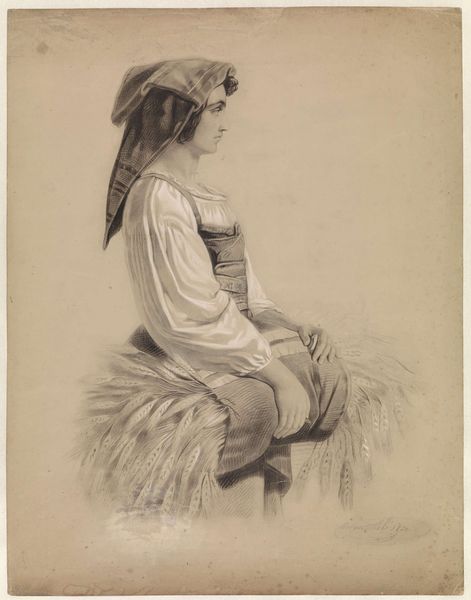
drawing, charcoal, pastel
#
portrait
#
drawing
#
bird
#
charcoal drawing
#
figuration
#
pencil drawing
#
portrait drawing
#
charcoal
#
pastel
Dimensions: Sight: 7 1/8 x 6 7/8 in. (18.1 x 17.5 cm)
Copyright: Public Domain
Curator: Welcome. Today, we are looking at "Seated Woman with Birds," a drawing by J. Carroll Beckwith, likely created between 1852 and 1917 using charcoal and pastel. Editor: It’s captivating! The figure and birds are beautifully rendered, but there's also a sense of restraint, even sadness, in the muted tones. What do you see in the composition that adds to its expressive quality? Curator: Let’s examine the relationship between the woman and the birds within the pictorial space. Notice the lines of her body – how they curve and direct our gaze towards the center. This circularity echoes in the huddled birds near her feet. It is essential to decode if this aesthetic relationship results in further symbolic implications. What do you think the tonal qualities achieve? Editor: I'm seeing the grey values throughout creating a more cohesive design... Maybe a sense of intimacy? Like this is a fleeting moment. Is that the mark of its compositional construction? Curator: Exactly. Beckwith’s drawing is less about meticulous detail and more about the arrangement of forms, creating tonal gradations that invite introspection. Look closely at the hatching used to define the woman’s drapery. The artist uses strokes to construct space, rather than illustrate literally. Editor: So, the expressiveness lies in how Beckwith manipulates these formal elements like line and tone rather than simply replicating what he sees? Curator: Precisely. Art is the result of those very artistic choices within a calculated framework of composition and materials. We’re compelled to contemplate this not by the story depicted, but the language of the artwork itself. Editor: This was great! I really began to analyze visual compositions through a new framework of art elements. Curator: A worthwhile and crucial method to comprehend artwork, indeed.
Comments
No comments
Be the first to comment and join the conversation on the ultimate creative platform.

